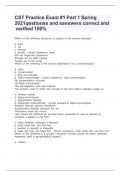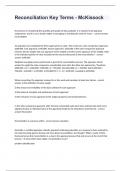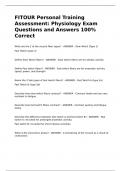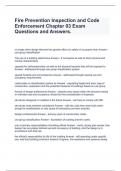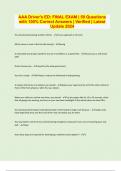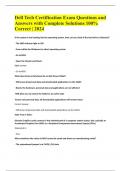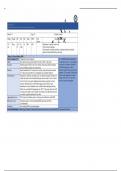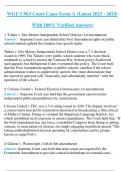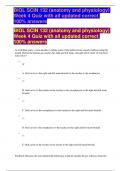Summary
Summary Dental Hygiene: Theory And Practice 4th Edition Test Bank By Darby Walsh All Chapters.
- Course
- Institution
- Book
Dental Hygiene: Theory And Practice 4th Edition Test Bank By Darby Walsh All Chapters./Dental Hygiene: Theory And Practice 4th Edition Test Bank By Darby Walsh All Chapters.
[Show more]




